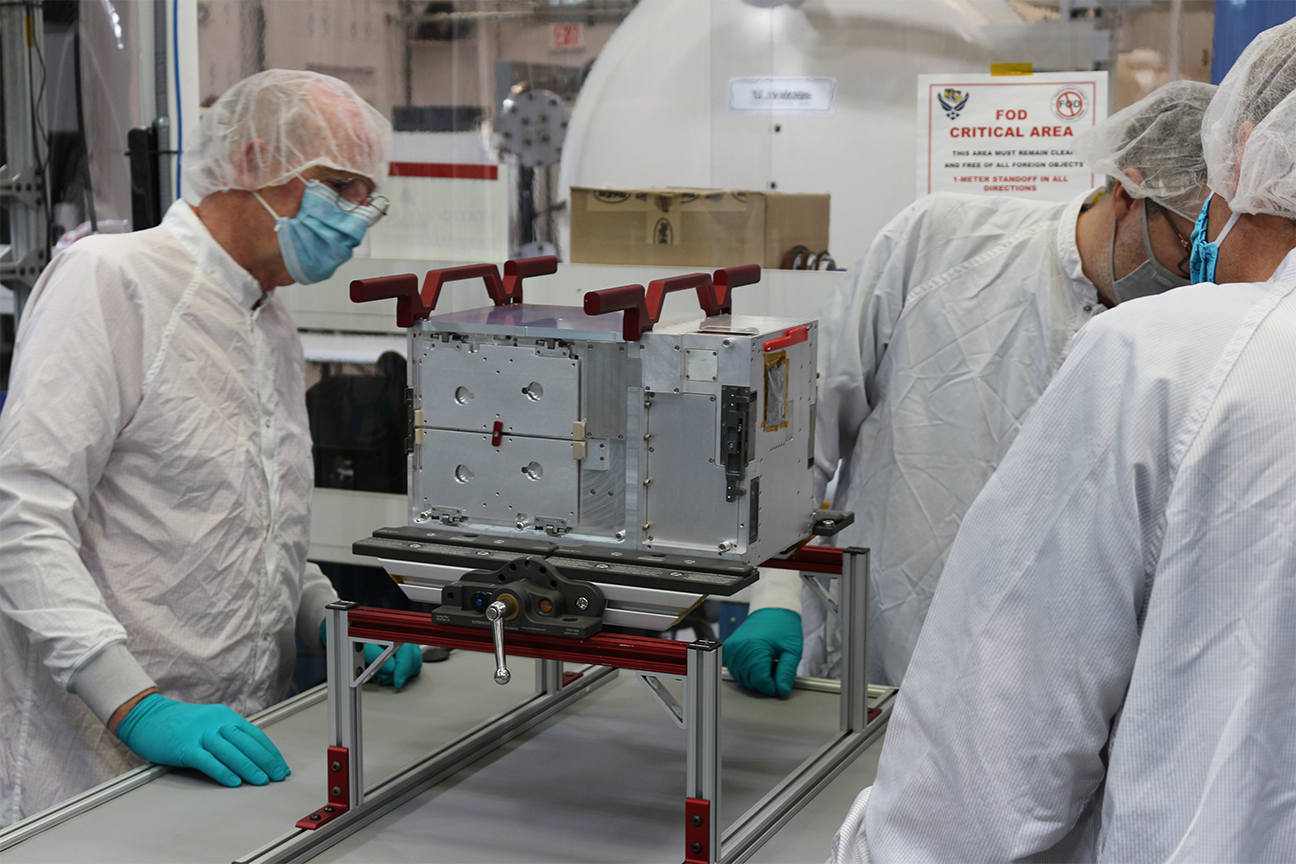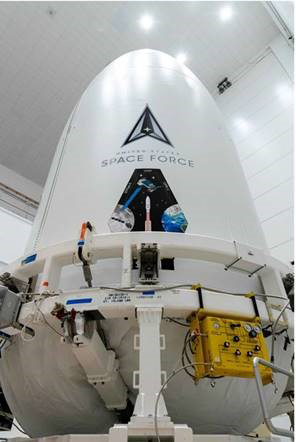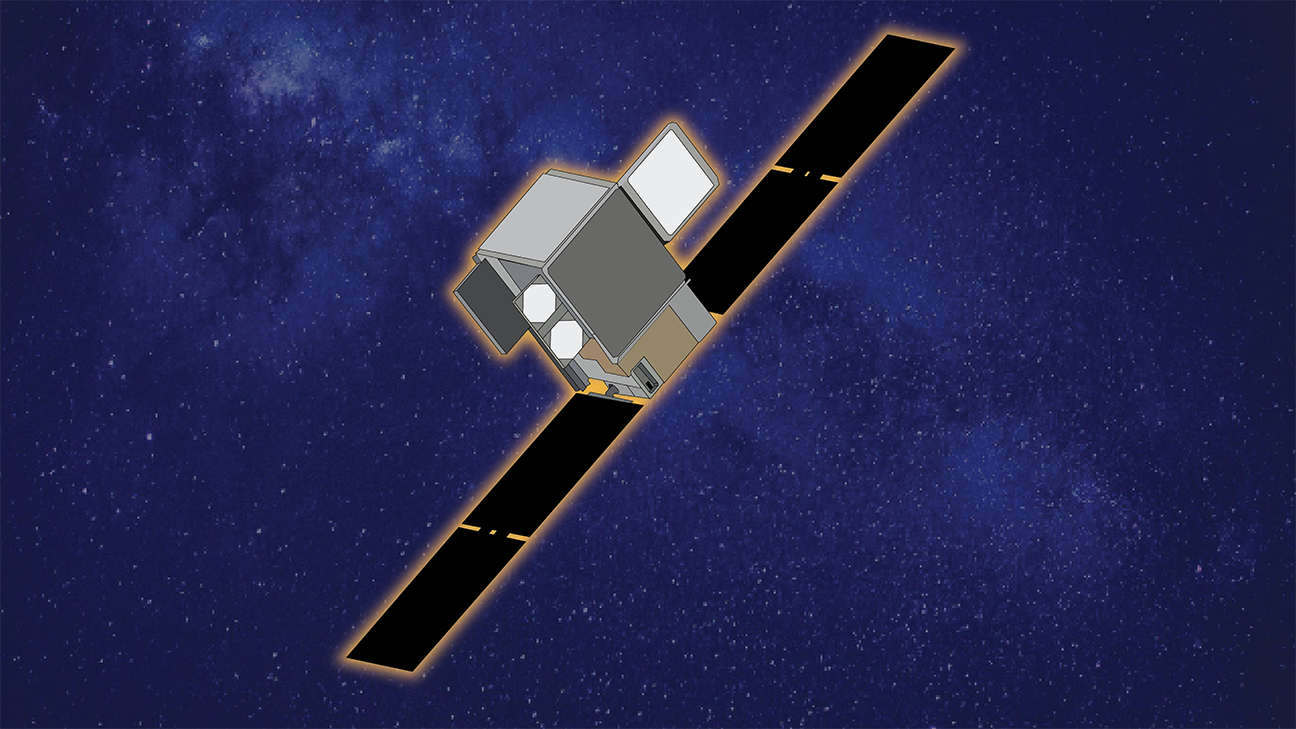AFRL celebrates launch of small-sat Ascent to GEO space
KIRTLAND AIR FORCE BASE, N.M. (AFRL) – The Air Force Research Laboratory’s Space Vehicles Directorate small satellite named Ascent was launched Dec. 7 from Cape Canaveral, Florida as part of the U.S. Space Force’s Space Test Program-3 mission, aboard a United Launch Alliance Atlas 5 rocket.
Ascent is a 12-unit Cubesat conceived and developed within the directorate’s Small Satellite Portfolio at Kirtland AFB, and in partnership with the Space Security and Defense Program.
“The Ascent mission will evaluate the performance of commercial-off-the-shelf (COTS) technology in the near-geosynchronous space environment,” said Ascent mission manager Capt. Sunderlin Jackson. “COTS technology has dramatically driven down the cost and schedule required for LEO flight experiments. We hope to extend those benefits to the GEO space environment, where the DoD has many important missions.”
The CubeSat is one of several payloads hosted on the Long Duration Propulsive ESPA-1 (LDPE-1), a cost-effective ”freight train” to space for experiments and prototypes in geosynchronous Earth orbit (GEO).
“We are looking forward to gaining a better understanding of the capabilities of COTS spacecraft buses in the GEO space environment, Jackson said. “The Ascent bus, developed by Blue Canyon Technologies, is composed of several demonstrations for a small satellite in GEO that includes cold-gas thrusters, electric propulsion and a COTS global position system receiver.”
Besides Blue Canyon Technologies of Boulder, Colorado, Ascent’s development includes industry collaborators Kongsberg Satellite Services out of Norway, providing commercial ground stations; Space Dynamics Laboratory located in North Logan, Utah, delivering systems engineering support and payload integration; and Axient of Huntsville, Alabama, supplying systems integration.
Jackson said that the Ascent program employs about 15 AFRL researchers along with many contractors and has a funding level of $10 million.
“This program will be the first CubeSat that our portfolio has flown in the GEO space environment, which introduces a number of challenges that are not present in the LEO environment where most CubeSats have flown,” Jackson said. “We’ve focused hard on designing, building and testing a spacecraft that should be able to survive in this region and lay the groundwork for future small-sat space experiments in GEO.”
After launch, the Ascent spacecraft will be deployed from its host, LDPE-1, in January 2022 to begin its mission.

Air Force Research Laboratory Space Vehicles Directorate engineers celebrate the liftoff of the lab’s Ascent spacecraft and four other flight experiments launched Dec. 5 from Cape Canaveral, Florida as part of the U.S. Space Force’s Space Test Program-3 mission, aboard a United Launch Alliance Atlas 5 rocket. (U.S. Air Force photo/Allen Winston)

Dec. 7, 2021 marked the 53rd U.S. national security mission to be launched by the #AtlasV, representing nearly 60 percent of the rocket’s 90 flights to date. One of the payloads on the mission is an experiment from the Air Force Research Laboratory’s Space Vehicles Directorate, a small satellite named Ascent, which is a 12-unit Cubesat conceived and developed within the directorate’s Small Satellite Portfolio at Kirtland AFB, and in partnership with the Space Security and Defense Program. (Courtesy photo/U.S. Space Force)

An AFRL technician working on the Ascent spacecraft in the Space Vehicles Directorate’s small satellite laboratory. (U.S. Air Force photo/Capt. Sunderlin Jackson)

Space Systems Command’s Space Test Program (STP)-3 integrated payload stack, in preparation for mating with United Launch Alliance’s Atlas V 551 launch vehicle readied for launch on Dec. 5 at Cape Canaveral Space Force Station. The rocket’s payload included the Air Force Research Laboratory’s small satellite, Ascent along with four other AFRL flight experiments. (Photo courtesy United Launch Alliance)

An artist’s rendering of the Ascent spacecraft, with fully deployed solar arrays. (U.S. Air Force illustration/Capt. Sunderlin Jackson)
